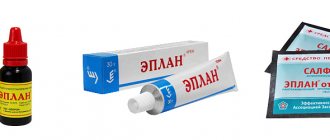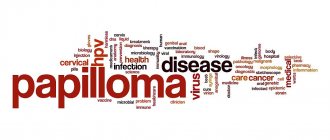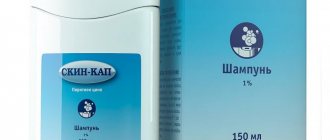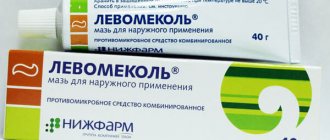Laboratory confirmation of flat, common and plantar warts is not required. The diagnosis is made based on clinical manifestations on the skin. For genital warts, laboratory testing is always necessary. Its purpose is not so much to confirm that the nature of the disease is HPV, but to determine the type of virus.
There are HPV strains that have no cancer risk, strains with low cancer risk, and strains with a high risk of developing cervical cancer. In this regard, if genital warts are suspected, virus typing is necessary.
For this purpose, polymerase chain reaction (PCR) in various modifications is usually used. Determining the type of HPV largely determines the nature and scope of treatment, as well as the tactics of clinical observation.
When can the medicine be used?
The drug is indicated for the treatment of respiratory infections of viral etiology. The medicine effectively relieves symptoms of influenza, respiratory syncytial, rhinovirus and other infections. It is actively used to treat COVID-19, including in children, pregnant and lactating women. The medication can be used even with the addition of bacterial flora:
- Inflammation of the membranes and tissue of the brain;
- Infection in the womb (cytomegalovirus, herpes, candidiasis, chlamydia, etc.);
- Pneumonia;
- Pathologies of the reproductive organs (trichomoniasis, ureaplasmosis, HPV and others).
Viferon can be prescribed together with antibacterial and antifungal medications, as it increases the immune defense of the entire body.
The product is effective against viral intestinal diseases, namely: rotavirus, enterovirus. When using the drug, vomiting, nausea, abdominal pain, diarrhea, and intoxication quickly go away.
The medicine is often used for herpetic rashes caused by Herpes simplex types 1 and 2. The product relieves itching and rash.
The drug can be used even in newborns and premature infants. It does not cause serious complications and is non-toxic.
What treatments are most effective for warts?
Treatment of warts, regardless of their shape and location, should always be combined. The therapy consists of a combination of two techniques. The first is aimed at removing existing warts, the second at preventing the appearance of new ones. They are usually prescribed simultaneously. If treatment is limited to removal only, it is not uncommon for warts to reappear. In this case, the number of new rashes may be greater than before treatment. This is due to the activation of “dormant” forms of the virus, which begin to cause the formation of new warts as a result of exposure to surrounding areas of the skin or mucous membranes.
There are quite a lot of methods offered for removing warts - from the use of chemicals (acids) to burn them out, to the use of liquid nitrogen, cauterization with electric current and other mechanical methods that destroy warts. All methods differ in the degree of effectiveness and safety. All techniques are quite painful and in most cases require local anesthesia. After removing plantar warts, it is recommended to refrain from active walking. Currently, the most effective and safe are laser technologies, in particular the use of the Surgitron device. After its use, as a rule, there are no noticeable marks left on the wart site from removal. This is especially important when warts are localized on the face and hands.
However, removing a wart is only half the treatment. It is necessary to ensure that they do not appear again. This can be achieved by using drugs that can destroy “dormant” viruses in the body, especially at the moment of their “awakening”. The most effective are interferon preparations. Interferon is a natural antiviral agent that can cope with active forms of infections. Moreover, due to the ability to activate the immune system, interferons provide protection to the body from hidden infections.
Instructions for use
The medicine in suppositories is used rectally (the suppository is inserted into the anus). To insert suppositories correctly, you need to spread your buttocks and insert a suppository into the anus. After administering the medicine, you should lie down for half an hour. During this time the candle will dissolve.
Now we will tell you how to place a Viferon suppository rectally for a baby. For children, suppositories are administered in a position on their side (newborns) or on their stomach (children over 1 year). To administer the medication, spread the buttocks and insert a suppository into the anus. Next, squeeze the gluteal muscles and hold the child in this position for 2-3 minutes (since the candle may slip out). After administering the drug, the baby should lie down for half an hour.
Can Viferon be used by children?
Viferon suppositories can be used by children of different ages. Doses of medication for infection in newborns and premature infants:
- Prematures with a gestational age of more than 34 weeks, 150,000 IU twice a day. The interval between doses is 12 hours. The duration of course therapy is 5 days.
- Premature babies less than 34 weeks - 150,000 IU three times a day (every 8 hours) for 5 days.
Children under 7 years of age with ARVI are also advised to take Viferon 150,000 IU twice a day. Course therapy lasts up to 5 days. If treatment is ineffective, you should see a pediatrician.
The number of courses of treatment may vary depending on the type of disease:
- flu - 1-2,
- cytomegalovirus infection - 2-3,
- enterovirus infection - 2-3,
- pneumonia (as a complication after a viral infection) - 1-2,
- herpes - 2.
The number of courses is determined by the doctor. The interval between them is 5-6 days.
According to research, with coronavirus, children under 7 years of age can be prescribed up to 1,000,000 IU 2 times a day. And for children over 8 years old, up to 3,000,000 IU twice a day. The duration of therapy is 7-14 days, depending on the severity of the pathology. Treatment with high doses allows you to quickly remove the pathogen from the body.
For viral hepatitis B, C, D, it is recommended to prescribe Viferon suppositories:
- Under 6 months of age: 3,000,000-5,000,000 IU per day;
- Up to 12 months of age: 5,000,000 IU per day;
- 1-7 years: 3,000,000 per 1 square meter of body surface area per day;
- Over 7 years of age - 5,000,000 IU per 1 square meter of body surface area per day.
In the first 1.5 weeks of therapy, the medicine is taken twice a day. Next, candles are placed every other day for six months to a year.
Indications and instructions for use of other forms of the drug
Candles can be used to treat the following pathologies:
- infectious and inflammatory processes in children, including infants with a gestation period of 34 weeks or more;
- viral hepatitis of the following types: B, C and D;
- viral hepatitis, which occurs chronically, as well as with complications, including cirrhosis;
- influenza, ARVI (both in adults and in children and infancy).
Suppositories are used rectally, and they are administered 1 piece at a time. 2 times a day. The course lasts 5-10 days, after which a break is taken and, if necessary, the therapy is repeated. To prevent relapses, treatment is carried out at intervals of 4 weeks. In this case, the minimum time between administrations of 2 suppositories in all cases should be 12 hours.
Candles are also given to children, including newborns, as well as premature babies. Main indications:
- ARVI;
- infection of enteroviral origin;
- pneumonia;
- meningitis;
- infections of herpetic origin;
- infections associated with cytomegalovirus;
- sepsis.
The dosage calculation, frequency of administration, as well as the total duration of therapy are determined by the doctor. Typically, newborns up to 6 months old are prescribed an amount of 300-500 thousand IU every day. And children between 6-12 months are given exactly 500 thousand IU.
The total daily amount is divided by 2 times and the suppositories are administered rectally. To do this, the child is placed on his side and both legs are tucked towards his stomach. Before starting the injection, you can coat the rectal area with Vaseline or baby cream. During insertion, the child’s body is fixed with hands and the buttocks are immediately clamped so that the suppository enters completely.
Treatment of various infections in adult patients
In adults, for ARVI, influenza and other pathologies of viral etiology, 500,000 IU is prescribed twice a day. Therapy lasts 5-10 days. If treatment needs to be continued, after completing the first course, take a break for 5 days, after which the therapy is repeated.
Pathologies caused by the herpes virus are indicated to be treated with a dosage of 1,000,000 IU twice a day. The course of treatment lasts 1.5 weeks. With frequent relapses, the course of therapy can last more than 1.5 weeks.
During pregnancy with a viral urogenital infection (including herpes), it is recommended to put a suppository of 500,000 IU twice a day for 1.5 weeks. Then twice a week, 1,000,000 IU per day (course therapy - 1.5 weeks). After a month, preventive therapy is indicated at a dose of 150,000 IU twice a day for 5 days. It is possible to repeat prophylaxis before childbirth.
For viral hepatitis, the medicine is indicated in a dose of 3,000,000 IU twice a day every day for 1.5 weeks. Afterwards, a maintenance course of 3,000,000 IU is prescribed every other day for six months to a year. The duration of therapy is determined by the doctor depending on the results of laboratory tests and the patient’s well-being.
For the drug to work correctly, you need to know where to store Viferon suppositories. The medication should be stored in a cool place so that the candle keeps its shape and does not melt. The optimal temperature is 2–8 °C.
Ointment "Viferon": instructions for use
The ointment is used only for external use. The instructions are simple - apply to the affected area of the skin or mucous membrane and gently smear with your fingers. The quantity should be small, the number of doses should be 3-4 per day. Therapy lasts 5-7 days; if necessary, the course can be continued, but only after consulting a doctor.
The gel is used for the prevention of acute respiratory viral infections and stenosing laryngitis in childhood. For these purposes, the composition is applied to a tampon and then transferred to the child’s tonsils 2 times a day. The course lasts no more than a week and can be repeated twice a year.
The gel can also be used to prevent ARVI in children during the first 2 years of life. In this case, the composition is also applied to a tampon, and then the mucous membrane of each nasal passage is coated (blow your nose and dry it first). The procedure is repeated up to 3 times a day for a week.
The gel is also used to treat herpes in adult patients. It is best to use it during periods of low flow, when rashes appear quite rarely. The composition is applied only to the affected areas, and the number of doses is from 5 to 7 in one day. Therapy is continued for 3-5 days, after which they take a break and, if necessary, repeat the cycle.
Ointment and gel - rules of use
Ointment or gel is often used to treat herpes on the skin and mucous membranes. A single dosage is 0.5 cm. The drug is applied to the skin or mucous membrane (nasal passages, tonsils) 3-5 times a day. The surfaces to be treated must be pre-cleaned. The duration of therapy is 5 days. External agents are indicated simultaneously with Viferon suppositories.
The gel can be used to treat inflammatory processes of the cervix. The product is applied twice a day. Before use, it is recommended to clean the cervical mucosa with a cotton swab so that there is no mucus. The course of therapy is 1-2 weeks. The gel is also used as part of the general treatment of cervicitis.
Attention! The tube should be stored in a cool place. Otherwise, the effectiveness of treatment is reduced.
For preventive purposes, external forms are recommended to be applied to the tonsils or nasal mucosa twice a day. Course therapy lasts up to 1 month.
Gel Viferon 36,000 ME
Against HPV
Interferons have unique effects and are necessary in the complex treatment of warts. Considering that the human papillomavirus affects the skin and mucous membranes of the genital organs and oral cavity, along with the systemic administration of interferon, it is necessary to use local forms of the drug, which significantly increases the effectiveness of therapy. An effective and safe drug from the group of interferons is the drug VIFERON® in the form of rectal suppositories - interferon alpha-2b and highly active antioxidants: alpha-tocopherol acetate and ascorbic acid. It is possible to destroy the “sleeping” virus in the cells of the skin and mucous membranes only through the combined effects of interferon, both systemically and locally. Thus, VIFERON® has a direct antiviral effect, penetrates cells affected by the virus and destroys the infection.
Reference and information material
Author of the article
Khaldin Alexey Anatolievich
Dermatovenerologist, clinical immunologist, MD, professor
Loading...
Take other surveys
special instructions
The drug should not be used for generalized or atypical herpetic infections. Since the medicine can cause an allergic reaction, it is not prescribed for atopic dermatitis or eczematous rashes. The drug is not recommended for:
- tumor processes on the skin,
- familial pemphigus Gougereau-Hailey,
- mental disorders,
- simultaneous use of sedative drugs,
- neutropenia less than 1.5×109,
- the platelet count in the blood is less than 90,000/µl,
- diseases in which there is a disruption of the central nervous system.
Analogues of the drug Viferon
Viferon has its own structural and non-structural analogues. Structural analogues include Grippferon, Kipferon. They also contain human recombinant interferon alpha-2b. Grippferon differs only in the release form (drops, spray). Kipferon is produced in candles.
Is it possible to combine Viferon and Kipferon? The combined use of drugs is not recommended, since they have the same active ingredient. With simultaneous use, an overdose or an allergic reaction is possible.
Non-structural analogues include:
- Anaferon - contains antibodies to human interferon gamma; less effective, allowed from 1 month;
- Arbidol - indicated from 3 years of age, for example, for coronavirus and influenza, has a less pronounced clinical effect in relation to acute respiratory viral infections, and is not used at all for bacterial infections, since it has a targeted effect on viral particles;
- Kagocel is an interferon inducer, affects the production of its own interferons, and is not indicated for infants and children under 3 years of age.
Viferon is the most effective medicine among all antiviral drugs. It has proven itself in the treatment of influenza, coronavirus and other acute respiratory viral infections in adults and children. Due to the lack of toxicity and undesirable effects, it can be used in pregnant women and newborns. The medicine is ideal for the prevention of viral diseases and is used as part of the general treatment of bacterial infections.










